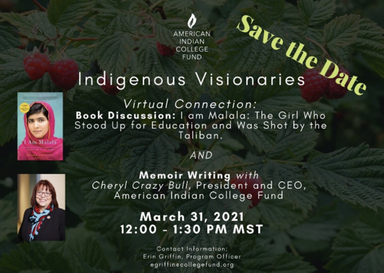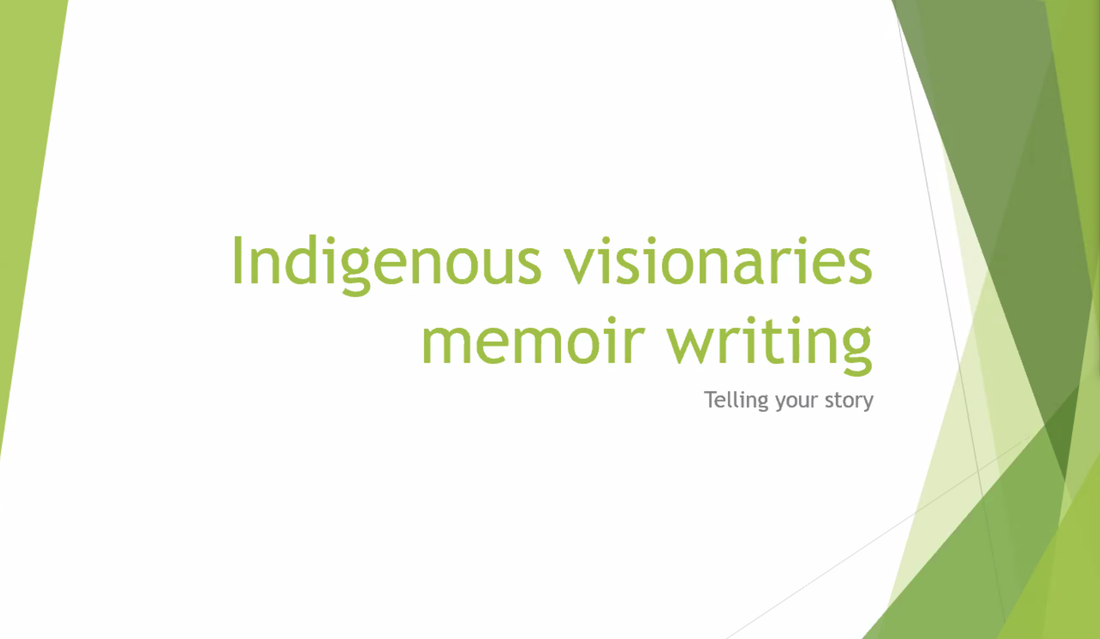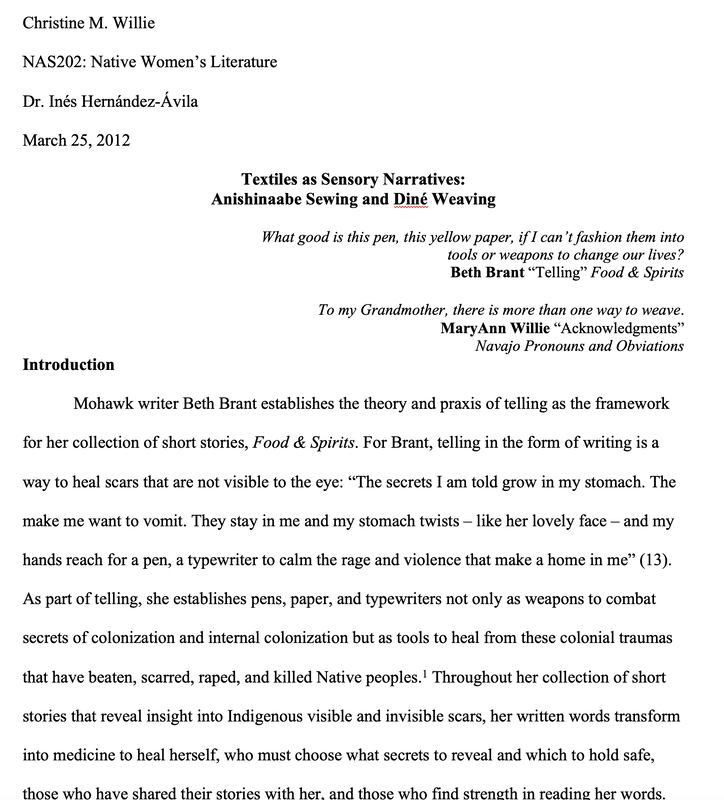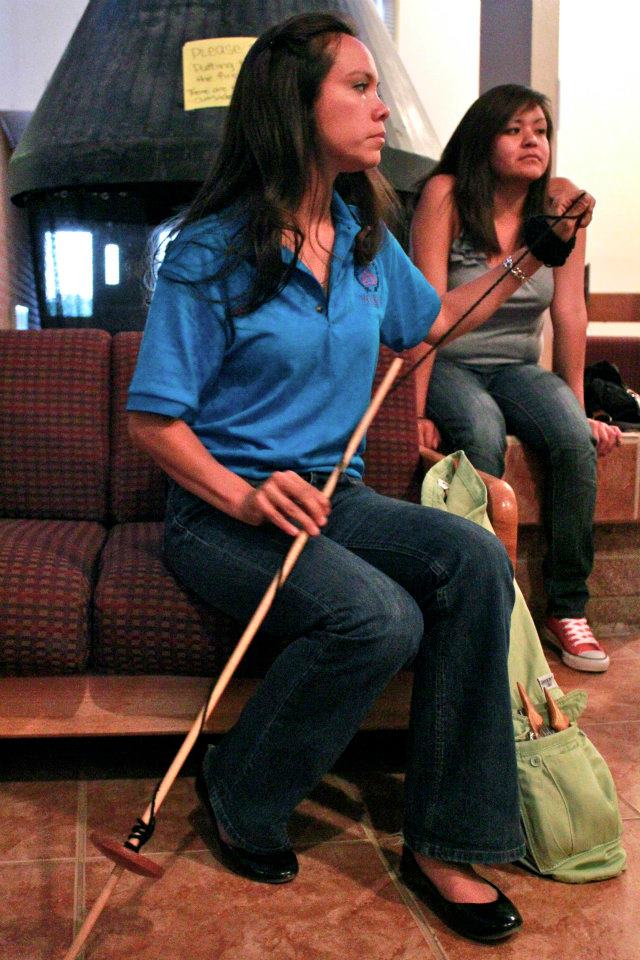Dr. Christine AmiNCAP Grant Manager and 2020/21 American Indian College Fund Indigenous Visionaries Mentor March 31, 2021: I couldn't image a better last day of National Women's History Month than with a book discussion on I am Malala followed by a memoir writing workshop with none other than the president of the American Indian College Fund, Cheryl Crazy Bull!
Throughout our Virtual Connection, we had the opportunity to hear from several of the other Indigenous Visionaries fellows from: Fond du Lac Tribal and Community College and Salish Kootenai College. We touched upon some key points and personal connections with the text. I was particularly impacted by commentary from our own NCAP Visionary, Tammy Martin, who pointed out that she read the story of Malala, a young girl who was shot by the Taliban for advocating for eduction, through the eyes of young Nobel Peace Prize winner's parents. Our discussion moved from takes on feminism to the power of writing for women. One of our College Fund facilitators brought forth a quote from the reading that highlights the act of writing as activism. Malala writes:
I know, I know - I am getting a bit jargony here - but hang with me for a sec or two... Specifically, Spivak highlights: "Can the subalern speak? What must the elite do to watch out for the continuing construction of the subaltern? The question of 'woman' seems most problematics in this context" (90). Through her critical eye of Foucault and Deleuze, she concludes: "The subaltern cannot speak. There is no virtue in global laundry lists with 'woman' as a pious item. Representation has not withered away. The female intellectual as intellectual has a circumscribed task which she must not disown with a flourish" (104). So the question remains - how does the intellectual, even the female intellectual, represent these voices without being condescending, without commoditizing their knowledges and their experiences, without engaging with epistemic violence of academia? For Malala the answer is clear, don't wait for the academic - write for ourselves. Just as my mind started to wonder further into memories of literary theory and gender studies lectures, inquiries of what/who defines an "intellectual", and the complexities of my role as a Navajo woman with a Ph.D. in academia, our Indigenous Visionaries event flowed into a memoir writing workshop - I see what you did there, College Fund people... read a memoir, workshop our own memoirs ;)
You see, I write in stories - a highly controversial form of data delivery in the academic realm - second reader responses typically echo: where is the hypothesis?; is this the introduction?; why can't you just get to the point?; is this creative writing?, is it theory?, is this even research? My introductions are usually snapshots of when the perplexities of the study have culminated in a personal setting and my conclusions are usually finalized with my traditional introduction, reaffirmations of who I am as a Navajo woman. In between are hypotheses, data, theory and research. More importantly, these stories from my experiences, from my studies - both formal and informal - are how I learned to learn and how I learned to teach. From weaving to butchering, from graduate papers to my dissertation, from to my response to the Navajo Nation's president for silencing me to my current application for a National Endowment of the Humanities Grant - stories are where you will find my voice, my successes, my failures, my family - it is where you will find me. So vulnerability pretty much wraps up a lot of my anxieties about publishing. Cheryl pushed those vulnerability buttons and had us practice some writing - "How does your story start?" What better time to test out the starting line to my article draft, entitled: "A Native Scholar Pushing Back: Epistemological Imperialism, Academic Gaslighting, and Credential Theft". What would people say? What would my peers think? Despite the fact that the group I was writing with could not have been more supportive, vulnerability creeped in. Oh well... here I go: In the stillness of my home before the sun rose, before my children, husband and animals awoke, I was trying to make sense of the theft of my Indigenous research credentials by a non-Native former colleague. Heads nodding - That's a good zoom sign. A voice reached out: "I would read that!" Another voice followed, "Yeah, I would too." Followed by another, "Now, I want to know what happened!" Validation of my experience, of my voice, of not only others hearing me - but of others listening to me. It was only the first sentence and the story was still to come, but it was an opening line that epitomized a crucial moment in my life as an academic and a Native woman and which also interwove my experience in complex sociopolitical realities of the Native American Studies discipline. After our workshop, I thought about what was shared and what it means for a Native American Woman to write down her stories. My fingers reached for one of the first Native women's anthology that I had ever read, Reinventing the Enemy's Language (1997). Julia Coates, Councilor for the Cherokee Nation's Legislative Branch, and my first Native Women's Literature professor at UC Davis, introduced me to this compilation of poems, songs, and essays that bring to life the "beautiful survival" of Native women, including all of the ugly as Joy Harjo declares: "We are still here, still telling stories, still singing whether it be in our native language or in the 'enemy' tongue" (31). As my mind returned to the issues brought forth by Spivak, these questions returned: How can I write about Navajo women, from my position as an academic, and encapsulate their voice with mine? And then I thought - why do I have to encapsulate ALL Navajo women and why do I have to write like a western academic? What I write about is my experience as a Navajo woman and I write in stories.
These sensory textile narratives constitute creative acts of writing, complicate constructions of Indigenous feminisms, and promote cultural sovereignty through means other than the enemy’s language. And as I thought of those words and my place in academia, I thought of my grandmother. I thought of how she told me stories - it was through weaving. Weaving is our memoir - In the warp are stories of her survival and mine. Each line is a recap of my day, smooth hooks retell my successes, each section unwoven is not only the presentation of one of my failures but also my reattempt at troubleshooting the problem at hand. Inside my weavings are my thoughts - my family - my research - my vulnerabilities. Inside my weavings are told, unseen stories. I haven't woven a complete piece in years - work and life have kept my loom covered. I tried to look at my weaving tools that were my nálí's who passed away from COVID complications in July. But I just wasn't ready. But today - today is different. Today I picked up my spindle. The warp, my hand, my thigh became one instrument. My spit used to mat and settle the warping mixed with the wood of the spindle and in return that taste of wood brought forth the memory of the feel of my nálí's velveteen skirt - coated with a slight tinge of mutton grease. The sound of my spindle on the floor joined the sound of her spindle in my memory. Just like that - My grandmother, Cheryl, Gayatri, Julia, Joy, Inés, and I, we started a new piece - In this warp is the outline for my next memoir - this one includes the stories of the Visionary fellows and how they got their mentor to weave once more. It is filled with the vulnerabilities we discussed in our workshop, power that is associated with learning to write ones story, and continuation of our ways of knowing with a weaving comb in hand.
0 Comments
Leave a Reply. |
Categories
All
Archives
October 2021
|
SocialsALL PHOTOS IMAGES ARE COPYRIGHT PROTECTED. PHOTO IMAGES USE IS SUBJECT TO PERMISSION BY THE NAVAJO CULTURAL ARTS PROGRAM. NO FORM OF REPRODUCTION IS PERMITTED WITHOUT WRITTEN PERMISSION FROM THE NAVAJO CULTURAL ARTS PROGRAM. |
Featured Pages |




